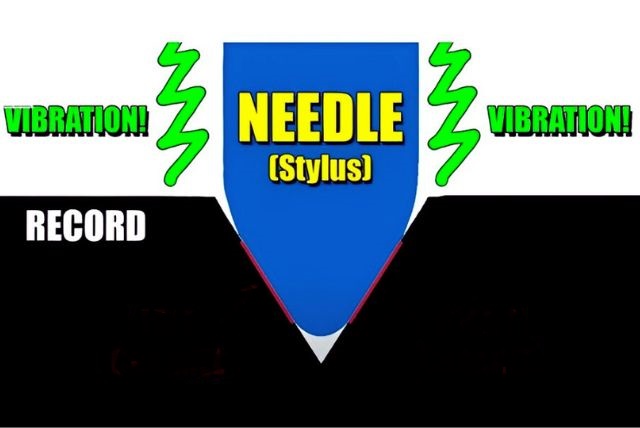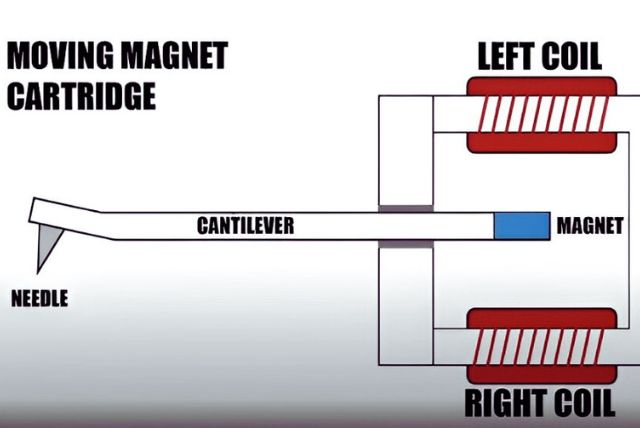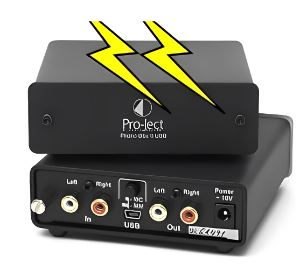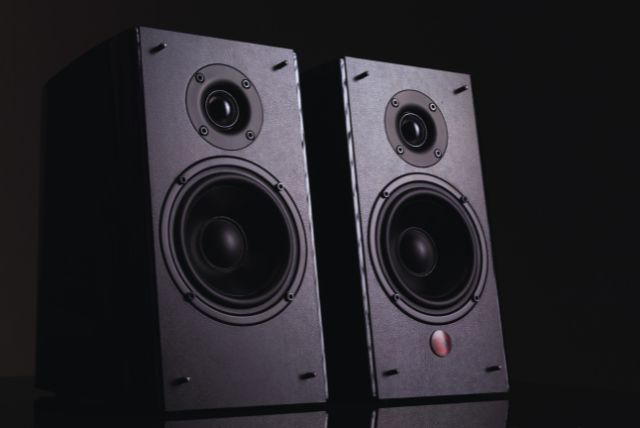Once, I met a guy at a local Colorado bar when I was travelling to Chicago from Los Angeles. We had a conversation about cars, food and good music. When he asked me about my hobbies, I told him how big of a fan I am of vinyl records and turntables. And then, with a surprise on his face, he looked at both sides of the table and whispered in my ear, “Hey Russ, I know it may sound weird to you. But can you tell me how does vinyl work?”
I told him it’s nothing to be embarrassed about and that it’s totally fine if he doesn’t know the science behind it. To simplify everything, I shared an example with him that I am going to share with you guys as well.
Imagine you are at the Ed Sheeran concert (Well, I am a huge Ed Sheeran fan). When he is singing his all-time superhit song “Shape of You” through the microphone, the microphone is picking his vocals. The microphone is doing exactly the same thing that a stylus does in a turntable, i.e. read the grooves.
Now, the vocals from the microphone (or the vibrations from the stylus) are converted into electrical signals and transferred to the pre-amplifier (same happens in the turntable), and then are further amplified and sent to the speakers, thus creating the sound that reaches your ear.
It’s okay if you still don’t understand exactly how it produces sound; I have more detailed information ahead on how vinyl is able to produce sound. But before that, let’s talk about a bit of its history.
History of vinyl records and their comeback
The history goes back to the first vinyl record that was 12 inches in diameter, made up of flexible plastic and could be played at 33 1/3 RPM speed. But they were a flop due to the great depression and a lack of playing equipment. Later, in 1939, Columbia Records kept working on the vinyl and introduced 12-inch long play 33 1/3 RPM microgroove records in the market.
After 10 years, in 1949, RCA Victor launched a 7-inch Extended play 45 RPM records. There was a neck-to-neck competition between the two formats for dominance. But after a few years, 12-inch LPs became the first choice for albums, and 7-inch EPs were used for singles.
In 1962, Phillips launched the cassette that gave tough competition to the vinyl records due to their ease of play, fast forward, rewind and pause features just with a push of a button. In 1974, Phillips introduced a new medium to store music that was CDs (compact discs), which resulted in declined sales of vinyl records, leaving only audiophiles and enthusiasts loyal to the format.
But after decades of music being circulated in the MP3 and MP4 formats, vinyl records finally saw a comeback in 2010. And In 2022, for the second year in a row, vinyl albums outsold CD albums. And the trend is on the rise since then.
As an audiophile, I am happy to see the comeback of vinyl records. FINALLY!
how does vinyl records work and produce sound ?
A vinyl record is a circular black disc that is made up of PVC (Poly Vinyl Chloride), a type of plastic, and has three wavy dimensions that are cut into spiral grooves. The grooves are responsible for creating vibrations that are picked by the stylus (cantilever) and later converted into music. There are whole sets of components that work in sync to bring out audio for you.
Now, without wasting any more minutes, let’s understand the process of how this music marvel is able to produce sound.
Stylus comes in contact with the grooves
When you place the vinyl record on the platter and lower the turntable tonearm onto the record surface, the very first thing that comes in contact with the beginning of the spiral record grooves is the stylus or the needle. The tip of the needle is generally made up of a diamond or sapphire, a hard material that continuously circles the vinyl grooves while playback.

Vibrations are produced
The stylus is connected to a thin rod called a cantilever. As the record starts spinning, the stylus starts tracking the grooves that cause the cantilever to vibrate.
Cartridge converts vibrations into electrical signals
The cartridge then converts those vibrations picked by the cantilever into electrical signals. The conversion is done either through a magnet coil or a piezoelectric crystal.
In a magnet-coil system, the vibrations of the cantilever cause the magnet move up and down next to the coil. Thus generating electrical signals. While in a piezoelectric crystal, the cantilever shakes the crystal, generating an electrical charge.
The intensity of electrical signals produced is directly proportional to the vibrations generated from the grooves.

Electrical signals are strengthened by the amplifier
The electrical signals that are created by the cartridge are weak and need further amplification. It is usually done by phono (pre-amp) built-in turntable or through an external pre-amp.

The role of speakers
Now, speakers come into the play. The amplified signals are sent to the speakers that have a diaphragm in place, which moves forward and backwards and recreates the sound waves that was originally cut into the record grooves.

And that’s the whole process of how music is generated from a record and reaches your ear. Hope it’s now clear to you, FOLKS!
Final symphony
It’s quite fascinating to know the science behind how a simple black disc can produce melodious music. From the vibrations picked by the stylus (cantilever) to the sound that comes out of the speakers, every component has its designated role and works with one another.
It’s okay if earlier you were not aware of the whole process of how it actually works. We are humans, and we cannot know everything. But now you know the secret behind it.
So next time, if your friends ask you the same question, satisfy their curiosity with your knowledge, or you can also share this blog with them. Whatever suits you.
Till then, keep playing your favourite record albums and keep helping others. Cheers!
Frequently Asked Questions
Q: Does playing vinyls ruin them?
Despite their purpose for playing, vinyl records are subject to wear and tear. Every time you play them, a small amount of wear and tear occurs. However, this can be minimized by investing in a good turntable.
Q: Can old vinyl damage stylus?
An old vinyl record won’t harm a record player needle because the needle is often made of diamond, which is much stronger than PVC vinyl records.
Q: Do vinyls wear out?
Yes, vinyl starts to wear out over time. The pace at which they wear out depends on how often you play a specific record and how well you take care of them. Factors like the quality of the turntable, the type of needle used and proper storage also play a big role in how long your records last and how good they sound.
Q: Do record players ruin vinyls?
While there is some wear and tear every time you play your records, record players, especially suitcase record players, can definitely cause more damage. Many of these players are made with cheaper components, often manufactured in China and can exert excessive downward tracking force, which can wear out your vinyl faster and mess with the sound quality.


